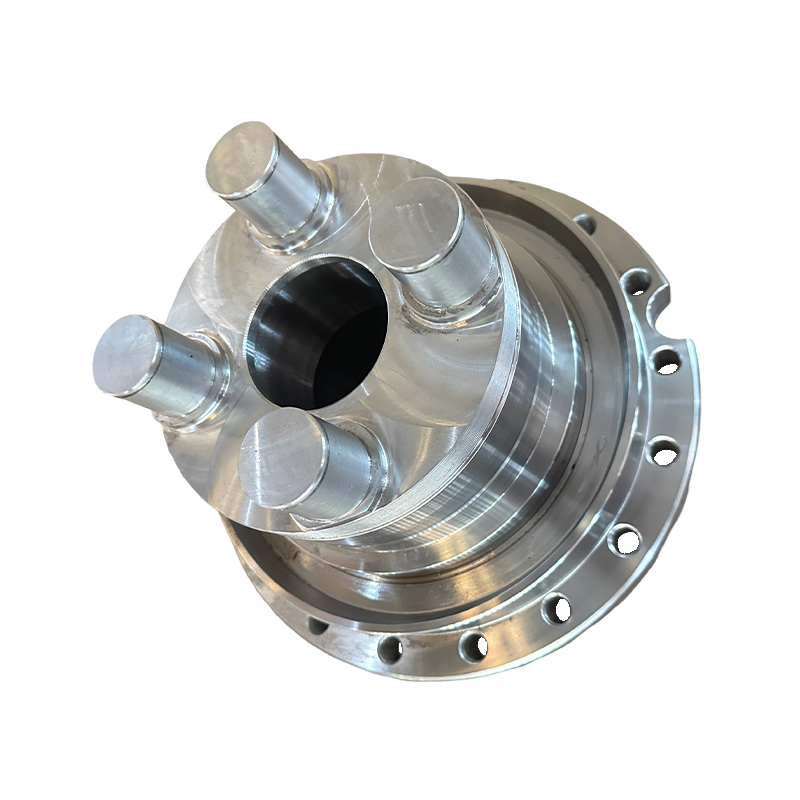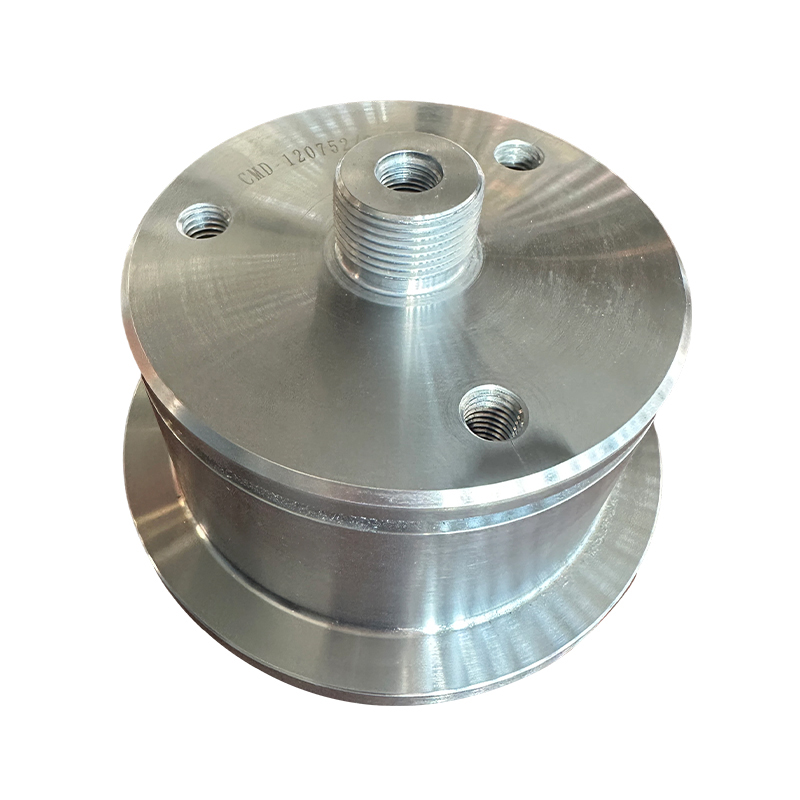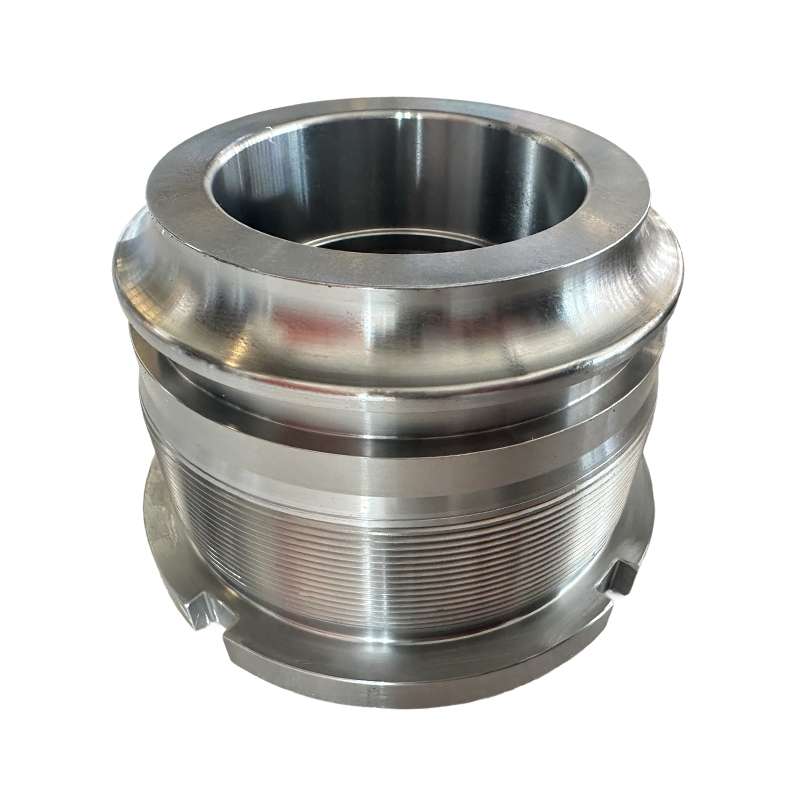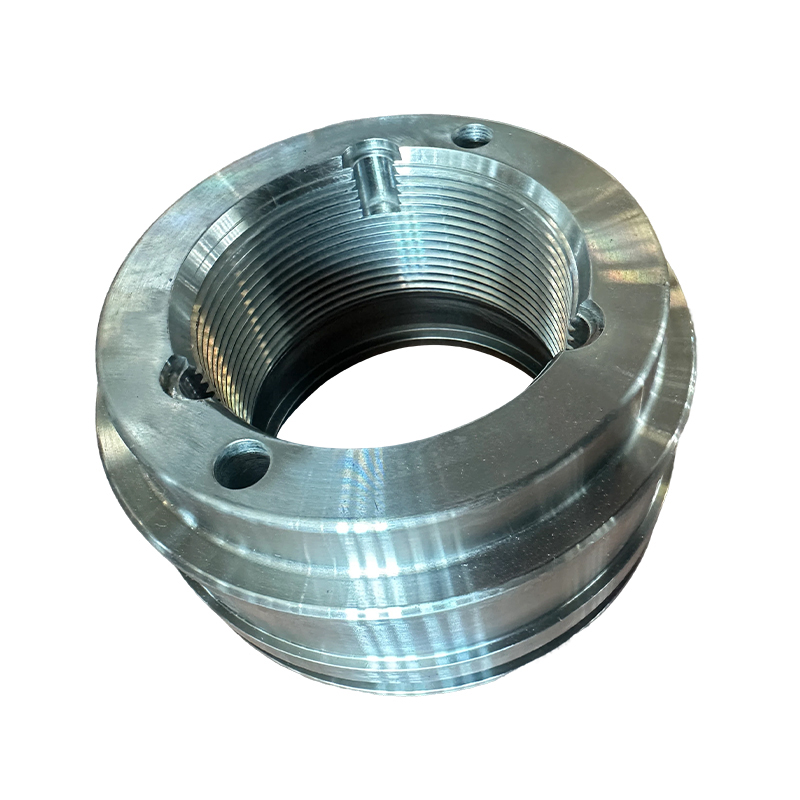Under the premise of ensuring strength, does the design of large flange consider reducing weight to improve the overall efficiency of the machine?
Release Time : 2025-04-24
In the field of modern engineering machinery, large flange is a key connector. Its design must not only ensure high strength and high reliability, but also consider how to reduce weight to improve the overall efficiency of the machine. With the advancement of technology and the continuous improvement of equipment performance requirements, optimizing the design of large flange has become an important way to achieve lightweight and high efficiency goals.
First, in terms of material selection, the use of high-strength, low-density alloy steel or composite materials is one of the effective means to achieve lightweight. For example, some high-performance alloy steels not only have excellent tensile strength and corrosion resistance, but also have relatively low density, which can significantly reduce weight while ensuring structural strength. In addition, the application of advanced composite materials such as carbon fiber reinforced plastics (CFRP) has also brought new possibilities to the design of large flange. This type of material is known for its excellent specific strength (ratio of strength to density), which can significantly reduce its own weight without sacrificing strength, thereby improving the overall efficiency of the machine.
Secondly, optimizing the geometry of large flange is also a key strategy to achieve lightweight design. Through computer-aided design (CAD) and finite element analysis (FEA) tools, engineers can accurately simulate the stress distribution under different working conditions and adjust the thickness, diameter and other key dimensional parameters of the flange accordingly. For example, without affecting the overall strength, the wall thickness of non-critical parts can be appropriately thinned, or a variable cross-section design can be used to disperse the pressure in the stress concentration area. This design method based on scientific calculation can not only effectively reduce the amount of material used, but also further improve the mechanical properties of the flange to ensure its stability and reliability in complex working environments.
Furthermore, innovative manufacturing processes also provide technical support for the lightweighting of large flanges. For example, the use of advanced precision casting technology can produce flange products with more compact internal structures and higher surface finish, reducing unnecessary material accumulation, thereby achieving the purpose of weight reduction. At the same time, the application of emerging manufacturing technologies such as laser cutting and 3D printing also makes it possible to achieve complex lightweight designs. These technologies can accurately control every detail, allowing designers to freely express their creativity according to actual needs and create large flanges that meet functional requirements and have aesthetic value.
Lightweight design under the premise of ensuring strength also requires full consideration of various factors in actual use. For example, for large flange connections that need to be frequently disassembled and assembled, the design should focus on improving their wear resistance and fatigue resistance. This can be achieved by selecting appropriate surface treatment processes, such as nitriding, carburizing or coating technology, which can not only enhance the surface hardness and wear resistance, but also extend the service life, indirectly achieving the goal of lightweight. In addition, for specific application scenarios (such as high temperature and high pressure environments), special design solutions can also be adopted, such as adding heat dissipation channels or strengthening sealing structures to ensure that they can maintain good working conditions even under extreme conditions.
It is worth noting that lightweight design is not just a simple weight reduction process, but also a systematic project involving comprehensive considerations in multiple fields such as material science, mechanical analysis, and manufacturing processes. In order to ensure the quality and performance of the final product, manufacturers usually conduct comprehensive testing and verification. From small-scale trial production in the laboratory to actual application testing on site, every link is crucial. Only through strict quality control and repeated verification can it be ensured that lightweight large flanges perform well in actual operations and meet the various needs of users.
Finally, in today's increasingly fierce global market competition, lightweight design is not only an effective means to enhance product competitiveness, but also an important driving force for industry progress. Through continuous innovation and technological breakthroughs, more and more companies have begun to pay attention to and invest in the research and development and production of lightweight large flanges. This not only helps to improve the overall efficiency of mechanical equipment and reduce operating costs, but also contributes to environmental protection and reduces energy consumption and carbon emissions. In the future development path, with the continuous emergence of new materials and new technologies, we have reason to believe that the lightweight design of large flanges will usher in a broader application prospect and bring more surprises and changes to all walks of life. In this era of pursuing sustainable development and high efficiency, lightweight large flanges will undoubtedly become a key force in promoting the construction machinery industry to a new height.
First, in terms of material selection, the use of high-strength, low-density alloy steel or composite materials is one of the effective means to achieve lightweight. For example, some high-performance alloy steels not only have excellent tensile strength and corrosion resistance, but also have relatively low density, which can significantly reduce weight while ensuring structural strength. In addition, the application of advanced composite materials such as carbon fiber reinforced plastics (CFRP) has also brought new possibilities to the design of large flange. This type of material is known for its excellent specific strength (ratio of strength to density), which can significantly reduce its own weight without sacrificing strength, thereby improving the overall efficiency of the machine.
Secondly, optimizing the geometry of large flange is also a key strategy to achieve lightweight design. Through computer-aided design (CAD) and finite element analysis (FEA) tools, engineers can accurately simulate the stress distribution under different working conditions and adjust the thickness, diameter and other key dimensional parameters of the flange accordingly. For example, without affecting the overall strength, the wall thickness of non-critical parts can be appropriately thinned, or a variable cross-section design can be used to disperse the pressure in the stress concentration area. This design method based on scientific calculation can not only effectively reduce the amount of material used, but also further improve the mechanical properties of the flange to ensure its stability and reliability in complex working environments.
Furthermore, innovative manufacturing processes also provide technical support for the lightweighting of large flanges. For example, the use of advanced precision casting technology can produce flange products with more compact internal structures and higher surface finish, reducing unnecessary material accumulation, thereby achieving the purpose of weight reduction. At the same time, the application of emerging manufacturing technologies such as laser cutting and 3D printing also makes it possible to achieve complex lightweight designs. These technologies can accurately control every detail, allowing designers to freely express their creativity according to actual needs and create large flanges that meet functional requirements and have aesthetic value.
Lightweight design under the premise of ensuring strength also requires full consideration of various factors in actual use. For example, for large flange connections that need to be frequently disassembled and assembled, the design should focus on improving their wear resistance and fatigue resistance. This can be achieved by selecting appropriate surface treatment processes, such as nitriding, carburizing or coating technology, which can not only enhance the surface hardness and wear resistance, but also extend the service life, indirectly achieving the goal of lightweight. In addition, for specific application scenarios (such as high temperature and high pressure environments), special design solutions can also be adopted, such as adding heat dissipation channels or strengthening sealing structures to ensure that they can maintain good working conditions even under extreme conditions.
It is worth noting that lightweight design is not just a simple weight reduction process, but also a systematic project involving comprehensive considerations in multiple fields such as material science, mechanical analysis, and manufacturing processes. In order to ensure the quality and performance of the final product, manufacturers usually conduct comprehensive testing and verification. From small-scale trial production in the laboratory to actual application testing on site, every link is crucial. Only through strict quality control and repeated verification can it be ensured that lightweight large flanges perform well in actual operations and meet the various needs of users.
Finally, in today's increasingly fierce global market competition, lightweight design is not only an effective means to enhance product competitiveness, but also an important driving force for industry progress. Through continuous innovation and technological breakthroughs, more and more companies have begun to pay attention to and invest in the research and development and production of lightweight large flanges. This not only helps to improve the overall efficiency of mechanical equipment and reduce operating costs, but also contributes to environmental protection and reduces energy consumption and carbon emissions. In the future development path, with the continuous emergence of new materials and new technologies, we have reason to believe that the lightweight design of large flanges will usher in a broader application prospect and bring more surprises and changes to all walks of life. In this era of pursuing sustainable development and high efficiency, lightweight large flanges will undoubtedly become a key force in promoting the construction machinery industry to a new height.







